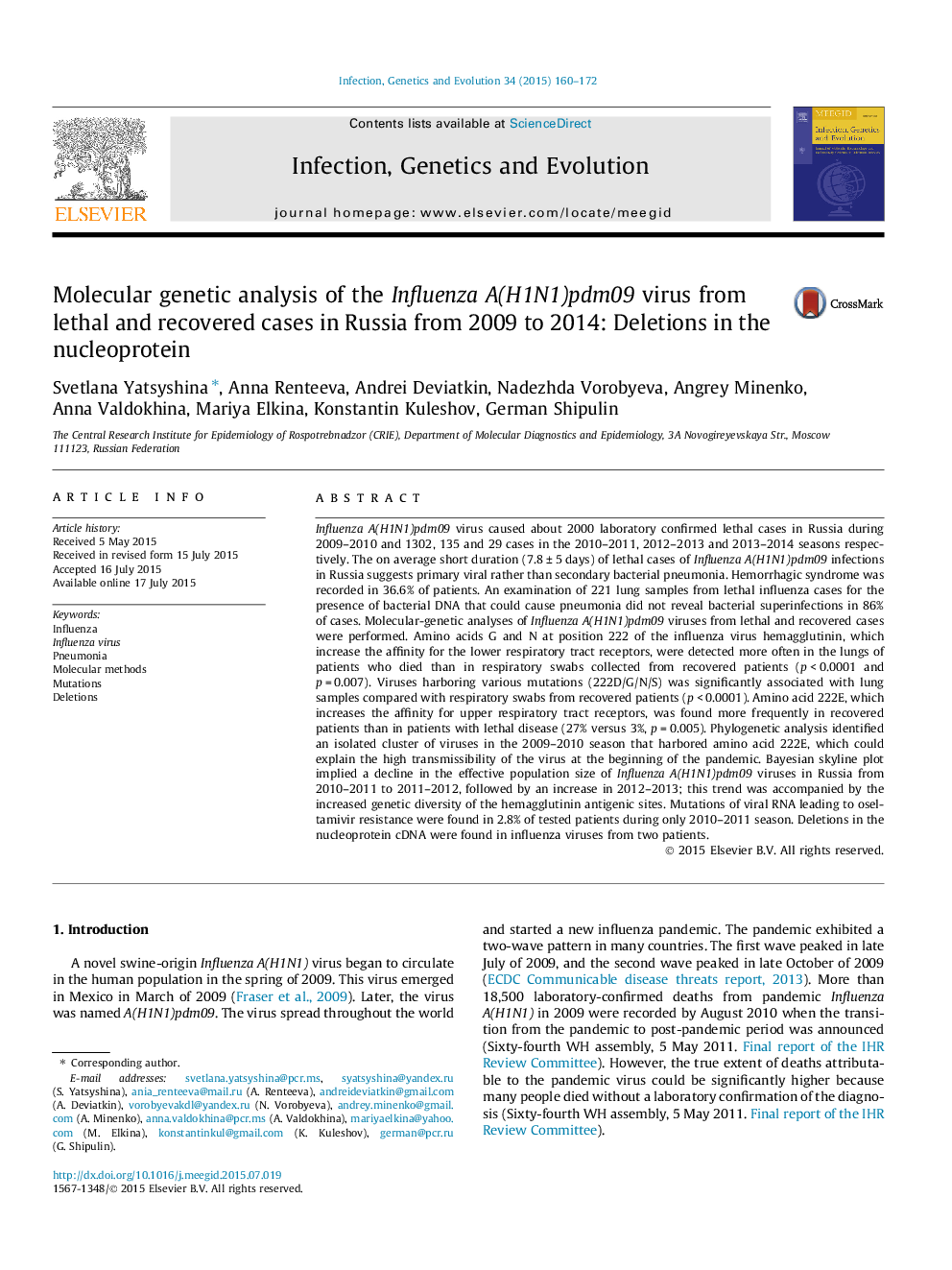| کد مقاله | کد نشریه | سال انتشار | مقاله انگلیسی | نسخه تمام متن |
|---|---|---|---|---|
| 5908978 | 1570169 | 2015 | 13 صفحه PDF | دانلود رایگان |

- A genetic analysis of Influenza A(H1N1)pdm09 viruses in Russia from 2009 to 2014 was performed.
- The high similarity to the Influenza A/California/07/2009 vaccine strain was demonstrated.
- An amino acid variability at position 222 of hemagglutinin was found in lethal cases.
- Mutation H274Y in neuraminidase was found only during the 2010-2011 season in 2.8% of viruses.
- Influenza viruses with deletions in the nucleoprotein cDNA were found in two patients.
Influenza A(H1N1)pdm09 virus caused about 2000 laboratory confirmed lethal cases in Russia during 2009-2010 and 1302, 135 and 29 cases in the 2010-2011, 2012-2013 and 2013-2014 seasons respectively. The on average short duration (7.8 ± 5 days) of lethal cases of Influenza A(H1N1)pdm09 infections in Russia suggests primary viral rather than secondary bacterial pneumonia. Hemorrhagic syndrome was recorded in 36.6% of patients. An examination of 221 lung samples from lethal influenza cases for the presence of bacterial DNA that could cause pneumonia did not reveal bacterial superinfections in 86% of cases. Molecular-genetic analyses of Influenza A(H1N1)pdm09 viruses from lethal and recovered cases were performed. Amino acids G and N at position 222 of the influenza virus hemagglutinin, which increase the affinity for the lower respiratory tract receptors, were detected more often in the lungs of patients who died than in respiratory swabs collected from recovered patients (p < 0.0001 and p = 0.007). Viruses harboring various mutations (222D/G/N/S) was significantly associated with lung samples compared with respiratory swabs from recovered patients (p < 0.0001). Amino acid 222E, which increases the affinity for upper respiratory tract receptors, was found more frequently in recovered patients than in patients with lethal disease (27% versus 3%, p = 0.005). Phylogenetic analysis identified an isolated cluster of viruses in the 2009-2010 season that harbored amino acid 222E, which could explain the high transmissibility of the virus at the beginning of the pandemic. Bayesian skyline plot implied a decline in the effective population size of Influenza A(H1N1)pdm09 viruses in Russia from 2010-2011 to 2011-2012, followed by an increase in 2012-2013; this trend was accompanied by the increased genetic diversity of the hemagglutinin antigenic sites. Mutations of viral RNA leading to oseltamivir resistance were found in 2.8% of tested patients during only 2010-2011 season. Deletions in the nucleoprotein cDNA were found in influenza viruses from two patients.
Journal: Infection, Genetics and Evolution - Volume 34, August 2015, Pages 160-172